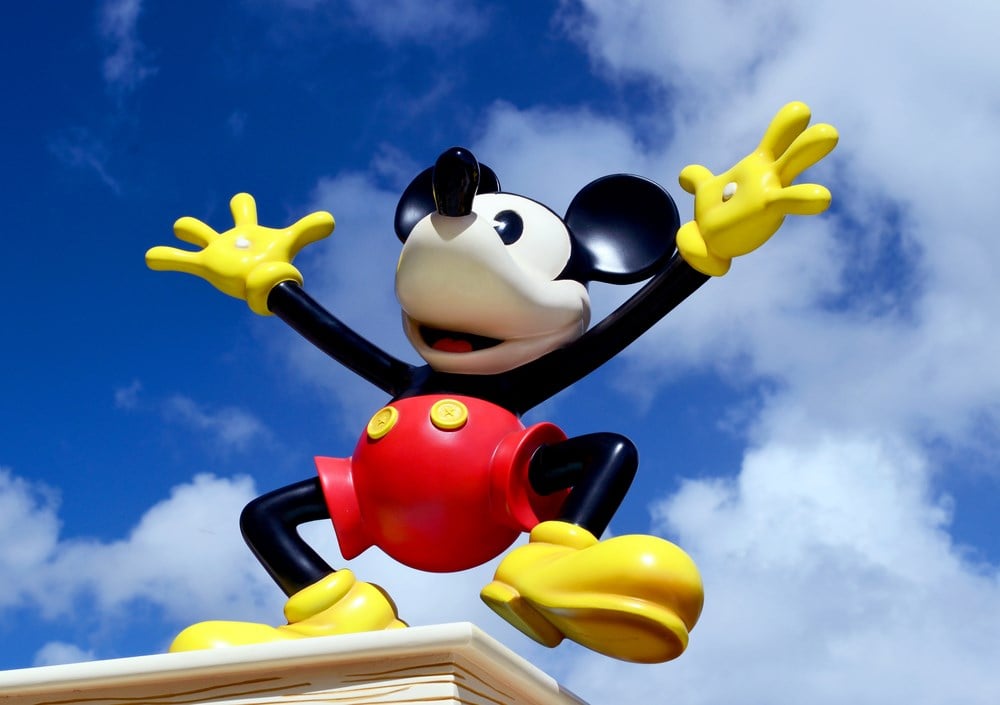Disney Stock Could Double: Return To Historical Performance Disney shareholders are in for an overdue rally; these tailwinds are gaining strength and may be the catalyst to realize analysts' top-side estimates of $177.
This story originally appeared on MarketBeat

Shares of Walt Disney (NYSE: DIS) were trading as high as $203 per share just two years ago when justifiable reasons to worry about the underlying business fundamentals and drivers should have been at all-time highs. Today, the stock broke below $90 per share for a 58% decline since 2021.
Considering the massive 'moat' around the Disney brand and its reliability to continue to expand into high-growth markets like streaming services, the case for this stock reaching its former highs is stronger than ever.
Over a ten-year, nearly uninterrupted rally, today's stock price would represent a 'golden ratio' Fibonacci retracement level. This ratio comprises the 61.8% to 78.6% retracement points, where most traders - and even investors - hope a stock will cease its decline, consolidate, and pivot its price action into a longer-term bull run.
However, investors should understand what is happening to Disney today and where the jet fuel may come from to return the stock price to its former glory days.
Same Company, Different Sentiment
Disney's analyst ratings point to a potential 34% upside from today's prices, with a top-side price target landing at $177, a more reasonable valuation considering the following trends. Historically speaking, revenue from domestic and international Disney parks locations have represented north of 40% of the company's net revenue; as of the second quarter of 2023, this number fell to 25%.
As the company keeps growing its top line via further market share gain through acquisitions and expansion within its streaming and content segment, revenues from parks and experiences are set to more than double.
Within the latest earnings presentation, total revenue derived from parks rose by 17% year over year, accruing to a 23% increase in the segment's operating income. The drivers behind this growth came from post-pandemic recoveries in traveling, massively helping the cruise lines division. Despite higher input costs due to national inflation rates rising, spending per capita (per guest) in parks rose to more than offset these costs.
International location growth, which stood over 100% year over year, was mainly driven by the company's Shanghai location, where the reopening of the Chinese economy has helped Disney see a kickstart in attendance and spending volumes.
Apart from an apparent tailwind growth in the parks segment, other more profitable and scalable operations may bring about the whole recovery play. Streaming users ended the second quarter of 2023 at 157.8 million for a total of Disney+; considering the platform launched in 2019 into a highly competitive space, this is nothing to scoff at.
Average monthly revenue per user rose to $7.14 to end the quarter, posing a 20% increase from the previous year. Two important things here, the fact that this revenue (amounting to roughly $13.5 billion annually) is mainly recurring and stable should command a higher multiple given the quality and stability of its roots. Secondly, a 20% increase in subscription costs followed by a mere 1% decline in total users speaks volumes to Disney's sizable moat around its brand, as virtually all users saw enough value in the service to justify such a significant increase.
Normalized Performance
When looking at Disney's financials, investors can find a massive discrepancy between previous results and those seen in today's market environment. Before the effects of COVID-19 made their presence across the economy, Disney generated a six-year average net income of $9.6 billion. In contrast, today, this figure stands to be only $3.1 billion.
The contraction in the bottom line can be attributed to a similar halving in operating income, as nearly half of all expenses (and growth of the same) came from broadcasting operations. Investors saw their dividend payouts cut back in April of 2020, as the company deemed it necessary to recoup as much free cash flow as possible to navigate the pandemic and handle such a significant investment as Disney+ and other platforms.
Whereas the pre-pandemic norm for Disney's free cash flow generation stood at a normalized range of $7 to $10 billion, today, it is only a tenth of this range. Not only is Disney struggling to generate operating cash flow as before, but it is also allocating much capital to these higher-growth markets.
These are not necessarily bad news, however, as when revenues derived from parks inevitably return to their previous levels and resume standard growth rates, coupled with the profitability and scalability milestones to be reached in streaming; the bottom line will likely end up following its pre-pandemic margins.
Disney's price-to-book ratio, a more tangible value metric, is trading at its lowest level since 2012 (ex., COVID sell-offs). This lays the foundation for a double-momentum rally; as the free cash flow of the business starts to improve (with a 7x growth potential), book value will ultimately expand as there are more retained earnings and possible share repurchases.
Considering the stock's book value ratio has typically been 2.5x, investors can buy this metric today for only 1.7x and still be exposed to these tailwinds, which will expand the 'book.' Ultimately, increased free cash flows and streaming income stabilization will influence management into reinstating the dividend payouts, a significant event that could attract masses of investors into DIS stock.









